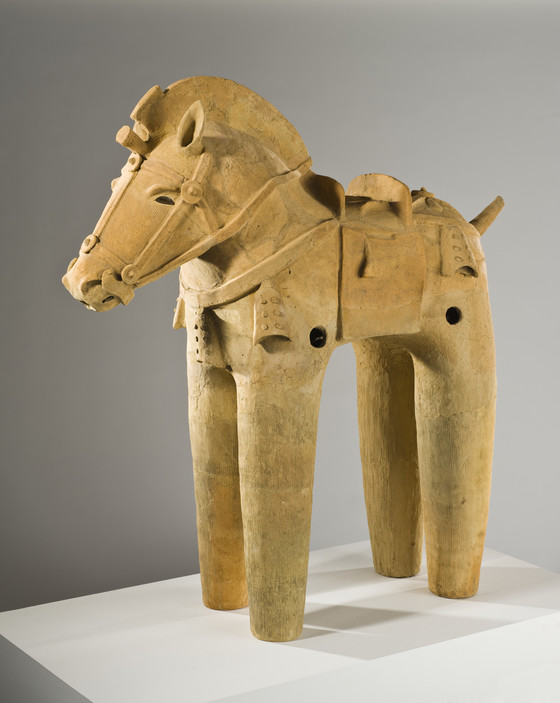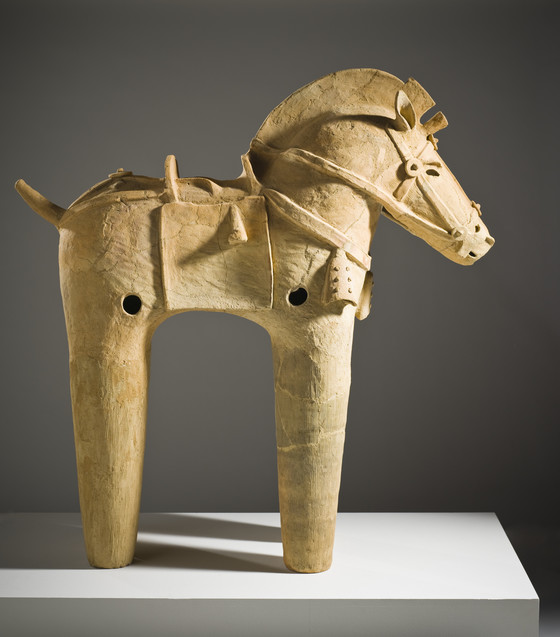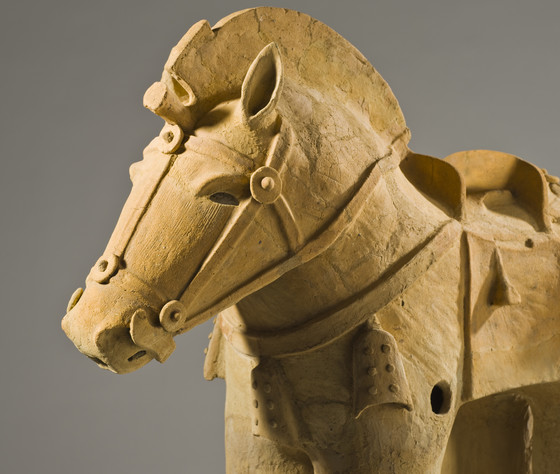Haniwa Horse



Please log in to add this item to your gallery.
View comments
Add a comment
Please log in to add comments.
Please log in to add tags.
* Nearly 20,000 images of artworks the museum believes to be in the public domain are available to download on this site.
Other images may be protected by copyright and other intellectual property rights.
By using any of these images you agree to LACMA's Terms of Use.
Haniwa Horse
Alternate Title: 埴輪 馬
Japan, 6th century A.D.
Sculpture
Earthenware
47 3/4 x 45 3/4 x 16 1/4 in. (121.29 x 116.21 x 41.28 cm)
Gift of the David Bohnett Foundation, Lynda and Stewart Resnick, Camilla Chandler Frost, Victoria Jackson and William Guthy, and Laurie and Bill Benenson (M.2008.102)
Not currently on public view


